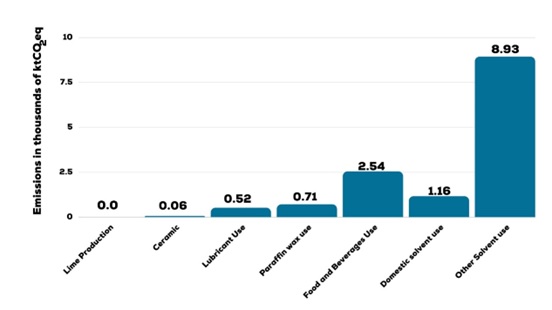Industrial Processes
What are Industrial Processes?
Industrial processes refers to the procedures by which items are manufactured. The process may be mechanical, physical or chemical. The industrial sector plays a key role in Ireland’s economic growth, but it can also be energy intensive with significant impacts on the environment. The emission sources relating to this sector include, cement production, ceramics, lime production, uses of carbonates, and solvent use.
Questions to bear in mind as you read this page -
- What would you like the Council to do to facilitate or assist emissions reduction in this area?
- What would you like to see the Industrial Sector itself do in County Waterford to reduce greenhouse gas emissions?
Where does the Council have influence?
- The Council has links with many industrial businesses in Waterford through its partnership with the Waterford Chamber of Commerce. The Chamber plays an invaluable role of supporting and nurturing businesses across the city and county. Ideas and feedback from the business community are garnered via networking events that take place throughout the year.
- The Council engages with industry through the planning application process.
- The Council has outlined its vision for Waterford to lead the national climate change agenda and become the first city in Ireland to achieve carbon neutrality. The Council will look to ensure new and existing businesses entering the Waterford market are aware of the important role they have to play in realising this vision and reducing their emissions.
What is the national picture?
The industrial sector accounted for 10.4% of Ireland’s total greenhouse gas emissions in 2021. Under the National Climate Action Plan, the ambition is to decouple the link between fossil fuels and industrial processes where practicable. Under the sectoral emissions ceiling target, industry must reduce its emissions by 35% by 2030 relative to 2018 levels.
Key targets under the National Climate Action Plan include:
- A 70-75% share in carbon-neutral heating by 2030.
- A decrease in embodied carbon in construction materials by 30% by 2030.
- A 10% reduction in fossil fuel demands by 2030.
What is the local picture?
Industrial emissions in Waterford account for 0.7% of total greenhouse gas emissions, 13.91ktCO2e . As the largest urban centre in the southeast, Waterford has been recognised as a key driver of national growth under the National Planning Framework. Manufacturing, engineering and industrial technologies are key to the local economy, employing over 31,000 people. According to the Waterford City 2040 Regional Plan, 41% of new jobs being created will be in high-value sectors including industry.
Waterford City and County Council will continue to work with local industry going forward to ensure that growth takes place in an environmentally sustainable manner. To reduce emissions across this sector locally, it is imperative that both physical and behavioural change take place.

What are other places doing?
Many countries are looking to reduce their emissions from industry via the process of industrial symbiosis.
Industrial symbiosis is the process by which waste or by-products of an industry become the raw materials for another. This results in waste being used in a more sustainable manner and contributes to the creation of a circular economy. The transition to such an economy is a key of the EU Commissions Circular Economy Plan, which seeks to increase Europe’s economic competitiveness, resource efficiency, resource security and sustainability.
In Lahti, Finland, PHJ Waste Management Ltd has been utilising industrial symbiosis to optimise waste processing and recycling. As much waste as possible is recycled and sorted for reuse in industry. Organic materials are used for biogas generation and in the onsite composting plant. Raw biogas can be produced from wastewater sludge and garden waste. This is then treated and upgraded at the facility before being distributed into the national gas network for general heating needs.